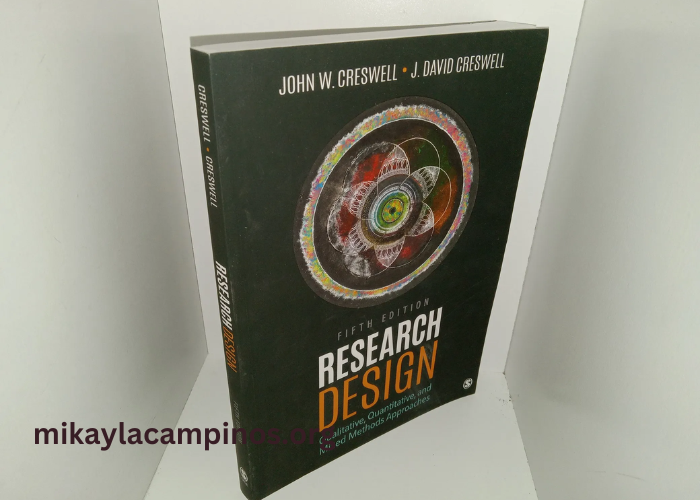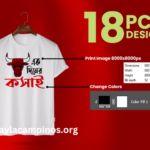Research design is a crucial part of any research project, guiding the methodology, data collection, and analysis processes.Research Design: Qualitative, Quantitative, and Mixed Methods Approaches offer a comprehensive framework to structure your research effectively.Â
These approaches provide distinct ways to explore a research problem, and selecting the right one depends on the nature of your research questions and objectives. In this blog, we will delve into each approach, offering insights into how they differ, their strengths, and when they are best applied.
What is Qualitative Research Design?
Qualitative research design focuses on exploring phenomena through in-depth analysis of non-numerical data such as interviews, observations, and texts. It’s often used in social sciences where understanding the subjective experiences of individuals is key. This approach allows researchers to dive deep into a subject matter, uncovering underlying motivations, emotions, and behaviors.
For example,qualitative research design enables you to gather rich, detailed accounts of personal experiences if you’re researching how people cope with stress in different cultural contexts. The goal is not to generalize findings across populations but to provide a nuanced understanding of complex issues.
Key features of qualitative research include flexibility in research design, open-ended questions, and the ability to adapt the study as new insights emerge.
When Should You Use Quantitative Research Design?
Quantitative research design focuses on measuring and analyzing numerical data to test hypotheses or establish patterns. It’s widely used in fields like economics, medicine, and psychology to derive conclusions based on statistical analysis.
Inquantitative research design, the objective is to quantify the problem by generating numerical data that can be transformed into usable statistics. For instance, if you want to measure the effectiveness of a new drug in treating a disease, quantitative methods allow you to collect data from a large number of participants, ensuring that your results are statistically significant and generalizable.
This approach is particularly valuable when you need to establish relationships between variables, test theories, or predict future trends. Standardized questionnaires, experiments, and surveys are common methods of data collection in quantitative research.
What is Mixed Methods Research Design?
Research Design: Qualitative, Quantitative, and Mixed Methods Approaches also include mixed methods research, which combines both qualitative and quantitative techniques. This design is gaining popularity because it allows researchers to capture the full complexity of a research question by using multiple types of data.
Mixed methods are useful when neither qualitative nor quantitative data alone can fully address the research problem. For instance, a mixed-method approach might involve conducting surveys to quantify people’s attitudes toward climate change (quantitative) and then interviewing a subset of participants to explore their feelings and motivations more deeply (qualitative).
The integration of both approaches provides a comprehensive understanding of the research topic, leveraging the strengths of each method while compensating for their limitations.
How to Choose Between Qualitative, Quantitative, and Mixed Methods?
Choosing betweenResearch Design: Qualitative, Quantitative, and Mixed Methods Approaches requires a thorough understanding of your research objectives, the nature of your research question, and the type of data you need.
If your study is exploratory and you’re seeking to understand underlying reasons and motivations, qualitative research is often the best choice. If you are testing a theory or hypothesis and need results that can be generalized to a larger population, quantitative methods are more appropriate.
Mixed methods are ideal when you want to both explore a phenomenon in depth and test theories or hypotheses. For example, in health research, you might want to understand how patients feel about a new treatment (qualitative) and also assess its effectiveness through clinical trials (quantitative).
How Does Data Collection Differ Across Research Designs?
Data collection methods differ significantly acrossResearch Design: Qualitative, Quantitative, and Mixed Methods Approaches. In qualitative research, data is collected through methods like interviews, focus groups, and participant observation. These methods allow for deep exploration of participants’ experiences and perspectives, often involving smaller sample sizes.
Quantitative research, on the other hand, relies on structured tools such as surveys, tests, and statistical instruments. These methods are designed to collect numerical data that can be analyzed using statistical techniques. Sample sizes in quantitative research tend to be much larger to ensure that results are statistically significant.
Mixed methods combine both qualitative and quantitative data collection techniques. For instance, a study may begin with a quantitative survey to identify trends and patterns, followed by qualitative interviews to explore those patterns in greater depth.
What Are the Strengths and Weaknesses of Each Approach?
Each approach inResearch Design: Qualitative, Quantitative, and Mixed Methods Approaches has its strengths and weaknesses, and understanding these is key to selecting the right one for your research.
Qualitative research is powerful for exploring complex, subjective experiences and providing rich, detailed data. However, its findings are often not generalizable to larger populations, and the data collection and analysis processes can be time-consuming.
Quantitative research offers the advantage of producing statistically valid results that can be generalized to larger populations. It’s especially useful when you need to measure variables and establish correlations. However, quantitative methods can sometimes oversimplify complex issues by focusing solely on numerical data.
Mixed methods combine the strengths of both approaches but can be complex and time-consuming to implement. Researchers need to be proficient in both qualitative and quantitative techniques, and integrating the two types of data can be challenging.
How is Data Analyzed in Each Research Design?
Data analysis differs substantially betweenResearch Design: Qualitative, Quantitative, and Mixed Methods Approaches. In qualitative research, data is typically analyzed thematically or through content analysis. This involves identifying patterns, themes, and insights from narrative data. The analysis is often interpretive, relying on the researcher’s ability to draw meaning from participants’ words and actions.
In contrast, quantitative data analysis involves the use of statistical tools to test hypotheses, calculate averages, and determine relationships between variables. This type of analysis is highly structured and follows strict methodological guidelines to ensure validity and reliability.
In mixed methods research, data is analyzed both qualitatively and quantitatively. For example, a researcher might start by performing statistical analysis on survey data and then use thematic analysis to interpret interview data that adds depth to the quantitative findings.
What Ethical Considerations Should Be Taken into Account?
When conducting research using any of theResearch Design: Qualitative, Quantitative, and Mixed Methods Approaches, ethical considerations are paramount. In qualitative research, issues of privacy and confidentiality are especially important since personal experiences and opinions are shared in-depth. Researchers must ensure that participants’ identities are protected and that informed consent is obtained.
In quantitative research, ethical concerns often revolve around ensuring that data is collected and analyzed fairly and accurately. Participants must be informed about the purpose of the research, and their participation should be voluntary.
In mixed methods research, ethical considerations include those from both qualitative and quantitative approaches. Researchers must navigate the complexities of protecting participants’ privacy while collecting both narrative and numerical data.
Conclusion
Research Design: Qualitative, Quantitative, and Mixed Methods Approaches offer diverse ways of exploring research questions, each with its own strengths and limitations. Choosing the right design depends on your research goals, the nature of the data you need, and the complexity of the research problem.Â
Whether you are seeking in-depth insights from qualitative research, looking for generalizable trends through quantitative methods, or combining both in mixed methods, a clear understanding of these approaches will lead to more effective and meaningful research outcomes.



